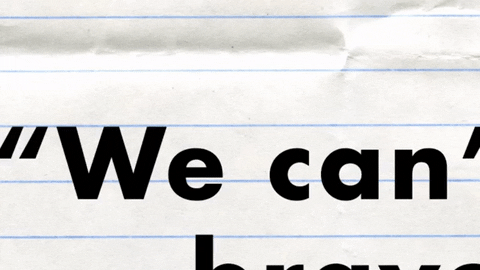By Jody Allard
Creating a culture of innovation requires making room for risks and learning from failure as part of striving for success. But today's classrooms still reward students more for getting the right answer than thinking outside the box. To educate the workers of the future, schools will need to adapt their curriculums and assessments to leave room for the big risks that drive big rewards.
Educating and assessing basic student competency in reading, writing, and arithmetic is one thing. Critical thinking and creativity are far more nebulous concepts than solving for x, and educators have their work cut out for them as they begin to rethink curriculum, teaching methodologies, and types of assessments to best prepare students for the future.
"Students graduating high school are expected to be agile problem solvers," said David D. Timothy, Ph.D., assistant professor of education at Delaware Valley University. "Schools need to answer this call."
Educators have struggled to adapt their strategies to meet this changing marketplace, and today American students rank 40th in the world in math, 24th in reading literacy, and 25th in science. Everyone agrees that American schools need to evolve to meet the demands of the 21st century. But how?
Traditional methods of evaluating students like grades, attendance, interim assessments, and standardized tests are an integral part of almost every school. Students are generally asked to work alone or in groups to find the correct answer. In some cases, if they show their work, they can receive partial credit even if they don't get the right answer. At no point in the process is a student's creativity, collaboration, or ability to respond to change evaluated — even though it's precisely these skills that are in the most demand.
Changing how students are assessed is one piece of the puzzle, but making room for risk is the foundation. When students know creativity, agility, and collaboration are expected of them, they tend to rise to the challenge. By developing curriculums that emphasize creative thinking and problem-solving instead of rote memorization, schools give students more opportunities to build these skills without fear of failing grades. Plus, as students adapt to the idea of achieving success as an iterative process, they become more comfortable with failure, learning to persevere until they succeed.
"Absolutely every child has the ability to succeed," says future XQ Super School RISE High principal Kari Croft. "We believe this is especially true when students’ holistic selves and lives are taken into account."
One way educators can teach to the whole student is through programs that focus on enrichment-focused, multi-dimensional learning.
One example is Salmon Bay K-8 School, one of a handful of public alternative schools in the Seattle Public School district, which bills itself as a place that empowers "compassionate, creative, and independent thinkers" by providing a "whole-child approach" to education.
At Salmon Bay, students and staff are on a first-name basis, and children receive a robust instruction in the arts, daily physical education, and enrichment classes like Afro-Brazilian dance, beading on a loom, mad science, and 3-D printing. Third graders explore Native American cultures by building replicas of villages in social studies and first graders learn about force, motion, and gravity by erecting elaborate ramps for balls to travel in science class. Every Friday morning, elementary school students begin their day together in song, and many classes have mindfulness periods built into their school days.
"A first grader in 2017 can plan, film, edit, and produce a documentary on the process of a butterfly. An eighth grader can 3D model a complex object and use augmented reality to overlay it into the world around them," said Michael Cohen, an Apple Distinguished Educator and former director of educational technology. "These types of experiences will embed learning into students forever."
But simply teaching students challenging, multidimensional content isn't enough.
Educators still need assessments that accurately measure whether students are gaining mastery of this content and developing the knowledge, skills, and attributes they need to be successful in the future working world. In the classroom, this can mean that students are graded on their creativity and collaboration, not just their final answer. But standardized tests have to evolve, too.
That's where a new approach to standardized testing comes in. From first grade to middle school to high school, current testing models don’t always represent an accurate measure of what a student is learning. One example of a breed of test that has been developed for middle and high school students is the College and Work Readiness Assessment (CRWA+). Instead of measuring a student's ability to recall facts, the CRWA+ evaluates a student's ability to access, structure, and effectively use information. The CWRA+ looks at how well a student can use their own experiences, knowledge, and skills to solve complex problems, and even whether students can tell the difference between fact and fiction.
A sample question on the CRWA+ for a middle school student is a far cry from what you might remember from your own classroom days. Students are assigned a role, scenario, and a task. In this case, they are asked to develop a healthy eating plan. Using documents ranging from an interview with a healthy eating expert to a sample meal plan and price list, students prepare their own meal plans and write a response essay that explains their reasoning and choices. Their responses are then evaluated for analysis and problem-solving ability, writing effectiveness, and writing mechanics.
Another example of this new breed of assessment is the California Critical Thinking Skills (CCTS) test family.
Designed for students from elementary school through college, the CCTS tests allow educators to identify and support students who might be struggling with critical-thinking skills long before they reach high school or college.
Tests like the CRWA+ and the CCTS may be the best way to measure student performance in today's "knowledge economy," where it's more important to know how to find and use information than to memorize it. But these tests are only as effective as the curriculums they're designed to measure — and an effective learning environment requires as much inquiry of its staff and learning methods as it does its students.
By creating an environment that constantly re-evaluates curriculum and assessment methods, schools can become as agile as the students they educate.















 Visualization of a black holeImage via Canva
Visualization of a black holeImage via Canva

 Speaking in public is still one the most common fears among people.Photo credit: Canva
Speaking in public is still one the most common fears among people.Photo credit: Canva muhammad ali quote GIF by SoulPancake
muhammad ali quote GIF by SoulPancake

 Let us all bow before Gary, the Internet's most adventurous feline. Photo credit: James Eastham
Let us all bow before Gary, the Internet's most adventurous feline. Photo credit: James Eastham Gary the Cat enjoys some paddling. Photo credit: James Eastham
Gary the Cat enjoys some paddling. Photo credit: James Eastham James and Gary chat with Ryan Reed and Tony Photo credit: Ryan Reed
James and Gary chat with Ryan Reed and Tony Photo credit: Ryan Reed


 Rock deterioration has damaged some of the inscriptions, but they remain visible. Renan Rodrigues Chandu and Pedro Arcanjo José Feitosa, and the Casa Grande boys
Rock deterioration has damaged some of the inscriptions, but they remain visible. Renan Rodrigues Chandu and Pedro Arcanjo José Feitosa, and the Casa Grande boys The Serrote do Letreiro site continues to provide rich insights into ancient life.
The Serrote do Letreiro site continues to provide rich insights into ancient life.